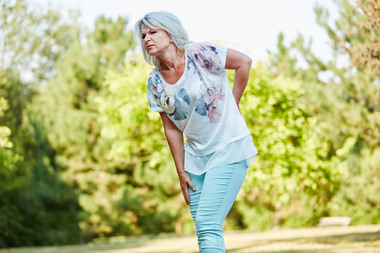
Renate L. has had a real medical marathon. From her youth on, she has been plagued by severe pain, which made it impossible for her to participate in sports lessons, for example. She often felt left out. In time, she took the pain for granted, got married and had children. The pain receded into the background, other things were more important and she had to function.
Non-specific pains all over the body, which felt like sore muscles, every movement hurt, some parts must not be touched at all - but you can't see anything. After an odyssey finally the diagnosis was made: Fibromyalgia. This syndrome can be very stressful and is considered to be incurable. With the right measures, however, many affected people can maintain a good quality of life as far as possible.
Fibromyalgia can be literally translated as fibre-muscle pain. Sleeping problems and physical and mental exhaustion are also common. Affected persons such as Renate L. complain of pulling, burning body parts, especially on the back, in the hips and along the extremities. The complaints also occur more frequently near the joints, but do not affect the joints themselves. Finger pressure can often cause significant pressure pain in certain areas and the muscles tend to become tense due to pain. The symptoms can vary, but often last for months or occur repeatedly.
It often happens that affected persons live for a long period of time with the assumption that their pain and complaints are nothing more than their imagination or have a psychosomatic cause, since no other recognisable reason for the ailments described can be found. And indeed, due to the diverse and unspecific symptoms and possible differential diagnoses, the diagnosis is usually difficult and requires thorough analysis. It is important to always take the fibromyalgia syndrome into account.
The possible forms of therapy - medicinal or not - show different efficacy and should be discussed with the patients. The individually created therapy plan is regularly reviewed and, if necessary, adjusted to achieve the best possible relief of the symptoms in order to improve the quality of life. It is also advisable to exchange experiences with other affected persons, for example in self-help groups.










